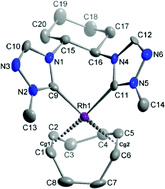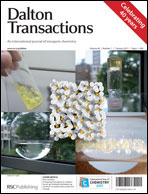Chiral N-heterocyclic biscarbenes based on 1,2,4-triazole as ligands for metal-catalyzed asymmetric synthesis†
Abstract
A facile and straightforward synthetic procedure for the preparation of new chiral bis-1,2,4-triazolium salts and their corresponding rhodium(I) biscarbene complexes are reported. It is widely applicable for the synthesis of 1,2,4-triazolium salts. The new chiral biscarbenes represent promising


 Please wait while we load your content...
Please wait while we load your content...